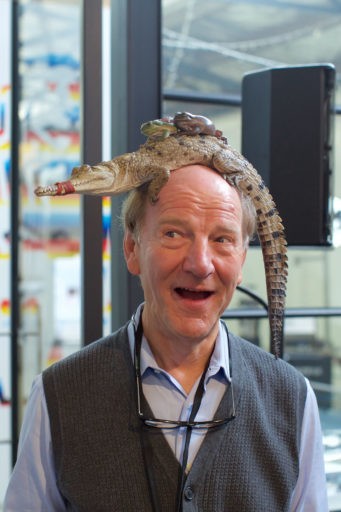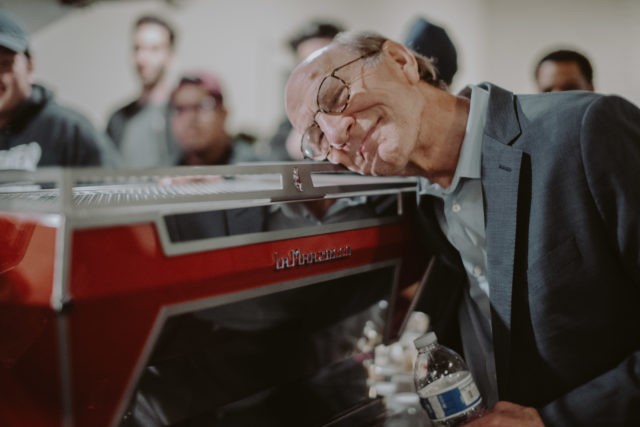Italian online coffee publication Comunicaffe sat down with Kent Bakke earlier this year, we are happy to bring you the translated version here.
Kent Bakke has played an essential role in La Marzocco history. Kent was born in 1952 in Wisconsin, USA. He started imported espresso machine into the United States in 1978, one of the first to do so at that time. With over 40 years in the industry, he was one of the first pioneers in the Seattle coffee scene, making a significant contribution to the development and innovation of the entire espresso machine sector. Kent was LA Marzocco CEO until 2018, and now holds a position on the board of directors of La Marzocco International.
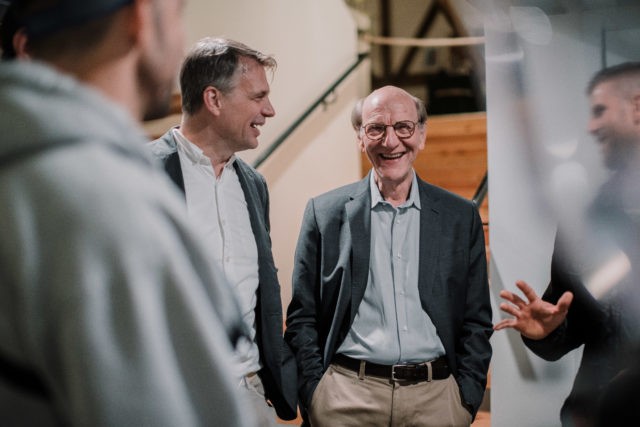
You speak Italian?
“I had to learn the language since it was rare to find someone who spoke English in Italy 40 years ago in the coffee sector. I started to work as an espresso machine technician and when I had a question, it was impossible to get a clear answer without knowing the language from the Italian manufacture.
After “ciao” and “pizza”, the first Italian word I learned was “guarnizione”, meaning gasket; an almost impossible word to pronounce for most Americans. Though it’s the first thing that needs to be fixed in a machine because it gets worn-out quickly with use.”
What made you fall in love with an espresso machine all that time ago?
“It was a particular choice. I never actually drank coffee, it didn’t give me that extra boost, and I never understood why so many people drank it. After university I started working at a hamburger joint with friends who all had a similar drive as I. Shortly after we purchased a sandwich shop and inside, we discovered an old Italian espresso coffee machine. I have always had a passion for mechanics and the machine itself sparked my curiosity. There It all started, a happy accident.”
When did you first come to Italy?
“In 1977 there was a total of 8 espresso machines in all of Seattle. In those years I first started to get my hands on the Victoria Arduino brand. Around that time I asked myself if I am repairing these, why don’t I just start importing them? So my partners and I went to Italy.
We wrote letters to several manufacturers, remember, at that time internet did not exist. The CMA replied and invited us to visit in 78’, there were three of us that went. Right after we traveled to Florence, the city was packed with La Marzocco espresso machine, so we contacted the company and went to visit it.
The niece of an American friend lived in the city and acted as a translator. Giuseppe and Bruno Bambi were still alive at that time, but our first contact Piero Bambi.
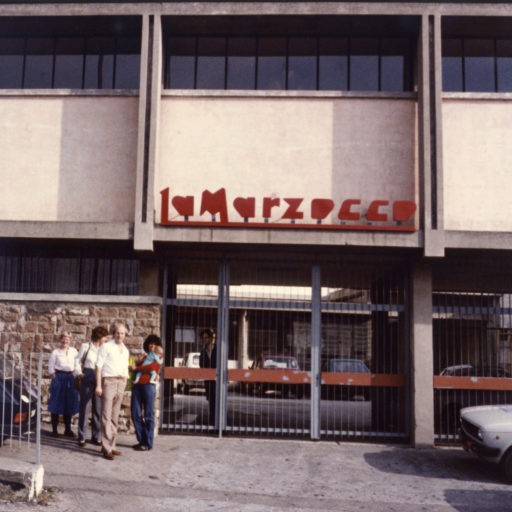
Fast forward back to America, with a year we sold our first espresso machine. We didn’t have much success in the sandwich shop so we focused our attention on La Marzocco, even though its popularity hadn’t arrived yet.”
And La Marzocco?
“It was all by chance, there was only several LMs in Seattle before we started importing them.”
But in addition to selling them, we started assembling them?
“Years later, yes. In the beginning, we imported, sold, and taught proper maintenance to technicians.”
How did you agree with the Bambi family?
“A Tuscan gentleman was living in Seattle who sold wine. His story is quite interesting. In the late 70s, the restaurant sector started booming in Seattle and he found someone willing to sell espresso. He asked for 50 $ and in return gave me La Marzocco’s address so I can buy the machine directly from Italy.”
How did you go from purchasing the first La Marzocco to assembling it?
“To use an espresso machine, you need coffee. Back then there were all three coffee roasters in Seattle. One of which was Starbucks, the original location, before Howard Shultz arrived. We had a relationship with them, but initially, Starbucks imported other brands and we were competitors for a while. Then we developed an exclusive relationship.
As the story goes, in the early 80s and early 90s Howard Shultz went to Italy and fell in love with the culture of the Italian espresso bar. He asked a Starbucks roaster to continue the “Il Giornale” project and so they opened 5/6 locations in Seattle.
It was in 1988/1989 when we started collaborating with Starbucks, and in 1993 we began to discuss a project, the opening of over 300 locations within a year. It was such great news! We contacted La Marzocco because we needed to supply an espresso machine to all of them. But we were surprised to hear the response from La Marzocco, “no”.
I then asked if I can have the license to assemble the machines and they said yes. The condition was to buy the company because there was no third generation to inherit it. After 15b years of a commercial relationship, the answer was clear to me. I would buy La Marzocco. I proposed this to a few friends, they invested with me, and in 1994 we acquired 90% of La Marzocco. With this capital, we build the production factory in Seattle to supply to Starbucks.
The contract with the Bambi family had three conditions: the espresso machine would continue to be built in Italy, we would keep all employees working in the factory in Italy, and the heart would remain Italian. This continued until 2004 when Starbucks began using super-automatic machines at all their locations. ”
Are you happy?
“Yes, I never imagined that my life would go in this direction. But yes, I feel lucky.”
The KB90 was produced in your honor, what does that mean?
“It is still an honor that is difficult to put into words. I never thought such a thing would happen.”
You followed the La Marzocco journey, and now the company gives you this gift.
“For me, it was a total surprise. I wasn’t involved in the design and didn’t know much about it. No royalties were given (Kent says with a laugh). In America, when I told my friends about the KB90 they didn’t get it right away, I had to explain what that meant. ”
You brought La Marzocco to the world, and La Marzocco appreciates this.
“When it all started most of those who imported to America, were Italian. But not me. In the US there wasn’t a great culture of espresso and we couldn’t know how it would turn out. I knew nothing about coffee, but I saw an enormous passion for baristas and roasters. That passion was exploited in marketing efforts in the US and the actual coffee was secondary. This has changed now.
In 1979/80 the coffee market collapsed in Italy because roasters bought and then gave espresso machines on loan to customers, along with their coffee. Fortunately, we met passionate people like the Bambi brothers who helped us bring high-quality craftsmanship to American.”
What future do you see for La Marzocco?
“I see is continuing giving importance to people, corporate culture, environment, our employees, and the collaboration with suppliers to maintain a quality cup of coffee. And the espresso machine.”
La Marzocco now has Modbar?
“Modbar is a project that was born with one of my partners, Joe Monaghan. Joe and I started collaborating with Jet Stream and their two founders, Corey Waldron and Aric Forbing. Almost six years went by until we contacted them again, and we found that they created a new concept. They showed us a drawing on a computer, they called it “Modbar” for a modular bar. This is because each element has its form.
They didn’t have a prototype or the resources to make one. But Joe understood the concept, you can change everything. You can design a space and put the steam wands and each element on how you preferred. The project was clean and sleek. It also guaranteed a different relationship between barista and customer. When Joe was convinced, I trusted his instincts. Together with the founder, we opened Modbar. After a few years, we presented the first prototype at SCA, it was a challenge.”
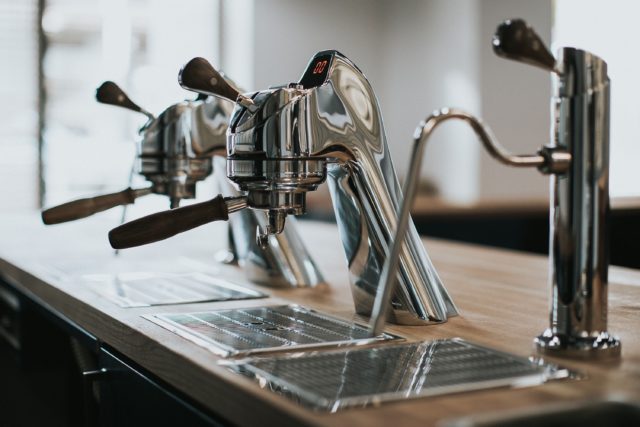
The Modbar has the same button design on the module, just like the KB90. Is that your signature?
“In the beginning, American made components were used on the Modbar. This was a process for us in understanding it’s standing independently. Later, we began to share the La Marzocco components. This is how the buttons were chosen. It’s not my signature, in fact, I never actually thought about it in that way.”
What is the future?
“La Marzocco has started making grinders. An espresso machine without a grinder is nothing. Historically, we dealt with it: The Swift is a concept developed for Starbucks. It ended up never being used by them, but it has huge relevance to other customers.”
Who has dictated the evolution of the Italian bar?
“When we started in the US, we had to teach people how to use the espresso machine and how to maintain it properly. We were young and sold directly to the area. This experience was important because many manufacturers are far from their customers. ”
So, you got close to the customers.
“For the first ten years, I also went to the customers personally to listen to their needs.”
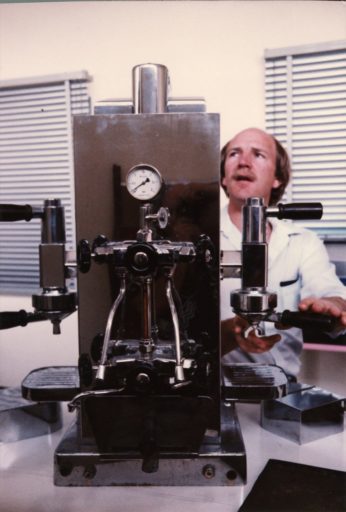
La Marzocco is the story of coffee, many different models have entered in its history of products.
“Yes, after 40 years, we can say it. But I never thought of entering into the history of professional espresso machines myself, even the history of coffee. I remember we produced 550 machines in 1994. Years ago, our big goal was to make that 5,000 machines per year. A target that seemed very far away. Instead, we have sold over 20,000 last year. La Marzocco has gone far beyond my expectations. The thing is, I didn’t know the market and I didn’t know how big it could get. The moment I started; my goal was to introduce quality Italian espresso machines to America. “
La Marzocco now has direct branches in South Korea, China, Australia, and all over the world.
“More than 100 countries know La Marzocco and the meaning of Made in Italy. It’s a very romantic aspect of the company that we will forever preserve.”
Any future projects?
“For me, it’s the internal development of the company. The Accademia del Caffè Espresso is in Florence, it’s location is the first La Marzocco factory. A dream of now CEO Guido Bernardinelli. The initiative brings a spotlight to the entire coffee supply chain, a view of cultivation to the cup. The whole process must be embraced. Another important objective is sustainability for the environment, farmers, and raw material.”
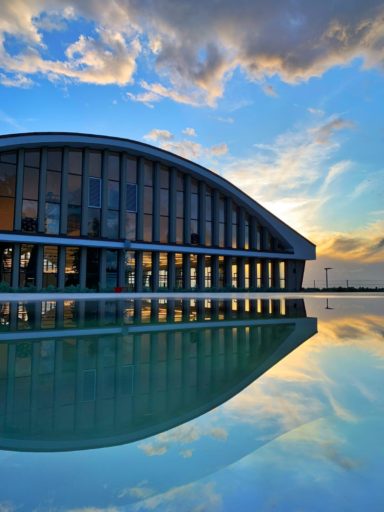
An American who discovered an Italian soul, does Italy recognize the merit?
“Last year we participated with the Comitato dei Cento and an award was given to La Marzocco “ In onore dell’ Italia che ci onora”. This award was not taken for granted. The award rewards excellent corporate culture and its leaders. A philosophy that we try to pass on to the new generation of leaders at La Marzocco.”
And your relationship with Florence, since it is the birthplace of La Marzocco?
“For me, Florence and La Marzocco go hand in hand. Many people may not know the history of the brand, why the Bambi brothers chose to stay in Florence. They were very proud of the city and chose the symbol of the lion statue made by Donatello for the company, the Marzocco lion.
I never thought the company would grow and become so well known. I remember when we participated in the first HOST in Milan. We had a small stand with only two people, adjacent to larger manufactures. Today, the growth exceeds my expectations, and this included the US, where we were even smaller.”
It was a turning point against other players.
“La Marzocco, as a company, has always followed its own unique and particular path. Far from the commercial epicenter of Italy, Milan. La Marzocco found a way to do things at her beat, not looking to others for guidance.
The goal has always been to maintain that commitment, that vision that has distinguished us since the beginning of this grand adventure, both as manufacture and humans. It has become a gorgeous passion.”
